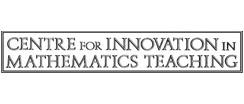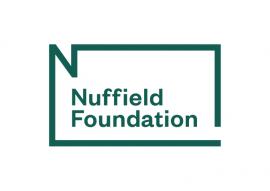Simplifying Algebraic Expressions
Students are expected to understand how to, and be fluent in, manipulation of algebraic expressions. This resource list provides a rich variety of ideas to provide opportunities for students to manipulate equivalent algebraic expressions, including expanding products of binomials; collect like terms and simplify expressions involving sums of products and powers.
Visit the secondary mathematics webpage to access all lists.
- ALL
- Teacher guidance
- Interactive resource
- Activity sheet
Teacher guidance
Algebra Study Units
These resources are for individuals or groups of teachers who are considering their teaching of algebra.
Unit 1: Using a grid method to multiply expressions - This unit discusses ways of using a grid method to help students to multiply a single term over brackets and to find the product of two linear expressions.
Unit 2: Transforming expressions and equations - This unit discusses ways of helping students to form equivalent expressions through 'clouding the picture' activities. It also considers two of the teaching principles that help students to use and apply algebra with confidence: providing opportunities for students to express generality asking students to 'find as many ways as you can'.
Unit 4: Rearranging equations and formulae - This unit discusses ways of using arithmetic to introduce algebraic ideas, specifically of using students' understanding of the laws of arithmetic and inverse operations to help them to rearrange equations and formulae. It also introduces the idea of a 'mental computer screen' to support algebraic manipulation.
Unit 5: Collecting like terms - This unit discusses some stimulating activities to help students to practise collecting like terms.
Unit 6: Applying skills in the context of ‘pyramids’ - This unit explores how students can use and apply their algebraic skills in the context of 'pyramid puzzles'. The work is developed in four stages: understanding the structure of a pyramid by using numbers collecting like terms constructing and solving equations intuitively constructing and solving equations more formally.
Unit 7: Using algebraic reasoning - This unit discusses ways of using magic squares and addition grids to help students to apply algebraic reasoning and for students working confidently at level 5 or above, to prove their results.
Interactive resource
Performing Number Magic A9
In this resource students analyse simple number 'tricks', and explain how they work, using algebra. They then try to create their own variants of the trick, making it more impressive. Students will: develop an understanding of linear expressions and equations; make simple conjectures and generalisations; add expressions, ‘collecting like terms’; use the distributive law of multiplication over addition in simple situations; develop an awareness that algebra may be used to prove generalisations in number situations. The activity begins by inviting learners to look at some simple number magic, which is best done using the computer software Number magic that is provided, but it can also be done using paper copies of the tricks.
Activity sheet
Algebraic Structure
This resource contains games, investigations, worksheets and practical activities.
The third activity in pack two (x+1)^2 explains how to square a bracket and identities explores expanding brackets such as a(a+b). The Unknown Square investigates squaring brackets whilst Equivalent Expressions requires students to match algebraic expressions in their expanded and factorised form.
Pack three contains the activity Algebra Pairs; a matching exercise involving expressions in their expanded and factorised forms.
Algebra: Brackets
This resource contains the file Algebra: brackets which contains explanations, examples and exercises covering expansion of single brackets, solving linear equations with brackets, finding common factors leading to simple factorisation and expansion of two brackets.
The activity Expansions and Area explores expanding brackets in the context of finding area of compound shapes and Expansion Crazy! explores squaring a bracket.
Number and Algebra 4
Unit 3 of this resource, Indices, reciprocals and powers contains a variety of activities including The power of inflation which requires students to explore the effects of annual inflation or depreciation. Powers in algebra provides practice using indices with algebra. Combining powers requires students to use indices when multiplying and dividing numbers expressed in index form. Reciprocals suggests activities providing the opportunity to learn about the reciprocal function. Problems with powers and numbers, investigates reciprocals and repetitions.





